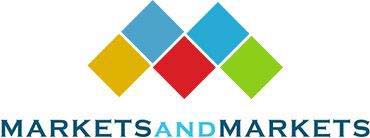The report "Metallized Film Market by Material Type (PP and PET), Metal (Aluminum), End-use Industry (Packaging, Decorative), And Region (North America, Europe, Asia Pacific, Middle East & Africa, and South America) - Global Forecast to 2026", is projected to grow from USD 2.4 billion in 2020 to USD 3.3 billion by 2026, at a CAGR of 5.3% between 2021 and 2026.
Metallized films are available in flexible form and used in a wide range of end-use industries, including food & beverage, pharmaceutical & medical, cosmetics, agriculture, and industrial. The variety of applications and the high demand in emerging economies are expected to drive the metallized film market. Rising consumer demand for processed and packaged food items and shifting preference for aesthetically appealing products are fueling the demand for flexible packaging, which, in turn, is driving the market for metallized films.
Download PDF: https://www.marketsandmarkets.com/pdfdownloadNew.asp?id=82604703
Packaging: Largest end-use industry of metallized film market
The packaging industry in the biggest consumer of metallized films. The segment is expected to continue dominating the overall metallized film market owing to the rising need for food products. Increasing demand for flexible packaging offers opportunities for the metallized film market in the food & beverage packaging industry. Owing to busy and hectic lifestyles, consumers opt for convenient mealtime solutions. This puts ready-to-eat meals in flexible packaging formats in a good position to take advantage of the current social and economic trend. Flexible packaging is the most cost-effective method to package, preserve, and distribute food, beverages, pharmaceuticals, and other products that need extended shelf life. These factors are expected to drive the demand for metallized films in the packaging industry.
Aluminum Metallized Film: Largest segment of metallized film market
Based on metal, the aluminum segment accounted for the largest share of the overall metallized film market. Aluminum metallized films offer excellent barrier performance against water vapor & gases, good metal bond strength, glossy appearance, good lamination bond strength, and good thermal & mechanical properties. These films are used in the packaging of snacks, frozen food, sweets and pastries, frozen desserts, coffee, and so on. The food packaging industry is growing due to the high demand from the growing middle-class population in developing countries.
Speak to Analyst: https://www.marketsandmarkets.com/speaktoanalystNew.asp?id=82604703
High demand from APAC: Major driver for metallized film market
APAC is expected to be the largest and fastest-growing market for metallized films, in terms of value and volume, during the forecast period. This high growth is due to the increasing demand from industries such as packaging and decorative. Economic development in India and China, along with the expansion of food & beverages and pharmaceutical industries, is a major factor driving the demand for metallized films in the APAC region. The major factors behind APAC’s high market share are high demand for lightweight, consumer-friendly, and easy-to-handle products. Growing focus on sustainability, increased need for extended shelf life, rising standards of hygiene, and consumer focus on ease of use are the key drivers of the metallized film market in the region.
Key players profiled in the metallized film market report include Cosmo Films Ltd. (India), Jindal Poly Films Ltd. (India), Polinas (Turkey), and Toray Industries Inc. (Japan).




